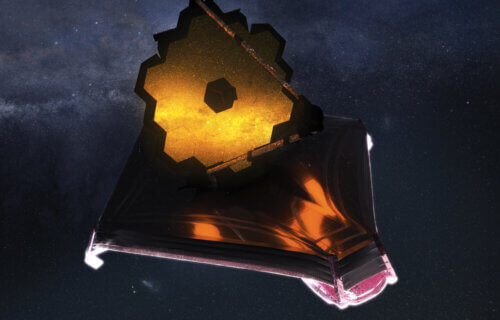WASHINGTON — NASA is set to unveil what should be spectacular images from the James Webb Space Telescope. The telescope, which is 21 feet in diameter and incorporates 18 hexagonal-shaped mirrors, was launched Dec. 25 from Europe’s Spaceport in Kourou, French Guinea.
NASA will be revealing unprecedented images of the James Webb Space Telescope beginning Monday, July 11 at the White House in a ceremony involving President Joe Biden. The president will release one of Webb’s first full-color images in a preview event beginning at 5 p.m. A live stream of the event will be available on NASA TV and the image will be available simultaneously on NASA’s website.
Tuesday, July 12 will be the big image release day beginning at 9:45 a.m., where NASA officials will giving opening remarks airing on NASA TV, the NASA app and the agency’s website ahead of the first images release.

Then, at 10:30 a.m. live coverage of the James Webb Space Telescope image release broadcast will air on NASA TV, the NASA app and the agency’s website. The public also can watch on NASA’s Facebook, Twitter, YouTube, Twitch and Daily Motion.
Following the live image release broadcast, NASA and its partners will hold a joint media briefing at NASA Goddard at 12:30 p.m.
James Webb Space Telescope Images: Social media sneak peek
On Wednesday, July 13, NASA Science Live will air on its website and social media channels as Webb experts will answer questions about the first images and data.
The space agency will also host an in-person NASA Social on Tuesday and Wednesday. Social media users can also join a virtual global social event on Facebook to get a behind-the-scenes look at the mission and celebrate James Webb Space Telescope’s first images.
“Released one by one, these first images from the world’s largest and most powerful space telescope will demonstrate Webb at its full power as it begins its mission to unfold the infrared universe,” NASA says in a statement.
What will the James Webb Space Telescope photographs show?
The Webb telescope targeted constellations, planets and galaxies. They include:
• Carina Nebula: The Carina Nebula is one of the largest and brightest nebulae in the sky, located approximately 7,600 light-years away in the southern constellation Carina. Nebulae are stellar nurseries where stars form. The Carina Nebula is home to many massive stars, several times larger than the Sun.
• WASP-96 b (spectrum): WASP-96 b is a giant planet outside our solar system, composed mainly of gas. The planet, located nearly 1,150 light-years from Earth, orbits its star every 3.4 days. It has about half the mass of Jupiter, and its discovery was announced in 2014.
• Southern Ring Nebula: The Southern Ring, or “Eight-Burst” nebula, is a planetary nebula – an expanding cloud of gas, surrounding a dying star. It is nearly half a light-year in diameter and is located approximately 2,000 light years away from Earth.
• Stephan’s Quintet: About 290 million light-years away, Stephan’s Quintet is located in the constellation Pegasus. It is notable for being the first compact galaxy group ever discovered in 1877. Four of the five galaxies within the quintet are locked in a cosmic dance of repeated close encounters.
• SMACS 0723: Massive foreground galaxy clusters magnify and distort the light of objects behind them, permitting a deep field view into both the extremely distant and intrinsically faint galaxy populations.
NASA believes the Webb telescope will solve mysteries in our solar system, look beyond to distant worlds around other stars and probe the mysterious structures and origins of our universe and our place in it.
